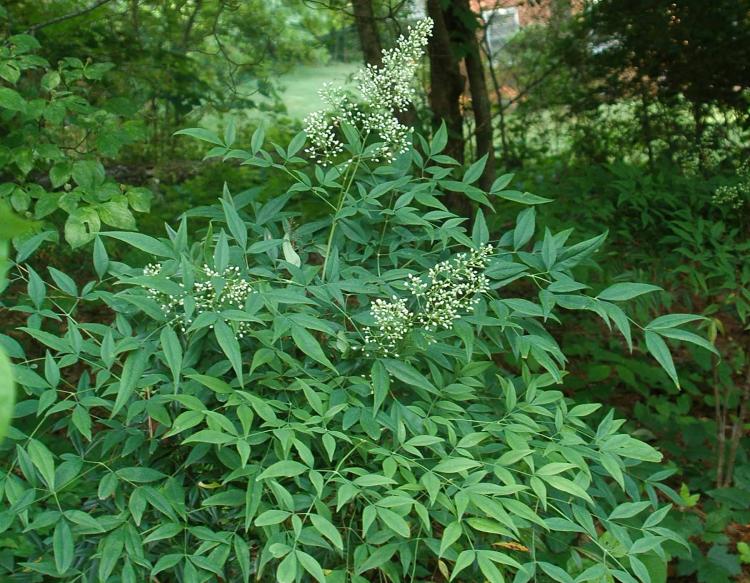Heavenly bamboo is an evergreen shrub with compound, somewhat lacy leaves and sprays of red berries that persist through the winter. A member of the barberry family, heavenly bamboo is a popular landscaping plant that has turned out to be invasive with negative effects on our native plants and animals.
Effects on Natural Communities
Forest and woodland natural communities are most threatened by the invasion of this species. It will form dense thickets that outcompete native vegetation, limiting food sources for wildlife. All parts of the plants are toxic. The berries contain high levels of cyanide and can poison wild birds and other animals, including pets. It has few pests or diseases, and wildlife don’t seem to eat it.

Title
Recommended Practices in Natural Communities of High Quality
Control measures may enlist one or more techniques:
Prescribed Burning
Fire alone is not likely to kill this plant, but can kill seedlings and set it back enough to allow treatment of the re-sprouting material.
Hand Pulling of Seedlings
Hand pulling is only effective for small specimens in loose soil: larger specimens have substantial root systems, and if even a small piece of root breaks off when the plant is removed, it will re-sprout from that broken root piece.
Cutting
Larger plants will be best controlled by cutting and treating the stems to prevent re-sprouting.
Applying Herbicides
Apply herbicide to the cut stems within a few minutes of each cut if using any water-based herbicide. A 20-percent solution of glyphosate can be applied to the cut stump either by spraying the stump with a low pressure hand-held sprayer or wiping the herbicide on the stump with a sponge applicator to prevent re-sprouting. Brush control herbicides that contain triclopyr are also effective.
Application in late summer, early fall, or the dormant season has proven effective. Avoid cutting and treating stems in spring when the sap is rising. Some re-sprouting may occur with a follow up treatment being necessary.
Caution: Glyphosate is non-selective, so care should be taken to avoid contacting non-target plants.
(Note: some products containing glyphosate or another herbicide may be pre-diluted, so be sure to read product labels to understand herbicide concentration levels).
Title
Recommended Practices on Lands Other Than High-Quality Natural Areas
Dense infestations may need to be treated with foliar spray, but this will likely be less effective than cutting and treating the stems. During the warmer months, a foliar spray of a product containing the herbicide triclopyr should be fairly effective, and will not harm grasses or sedges. During the winter months when the foliage is still evergreen, a foliar spray with glyphosate may be effective with minimal damage to dormant native plants.
Precautions when using herbicides:
- Glyphosate is a nonselective herbicide and care should be taken to avoid contacting non-target plants with herbicide.
- Do not spray so heavily that herbicide drips off the target species.
- By law, herbicides may only be applied according to label instructions.
Title
Failed or Ineffective Practices
Pulling or digging of larger plants is ineffective as small broken pieces of roots left behind will re-sprout.
Cutting without treating the stems immediately is ineffective.
Foliar spray of a triclopyr-based formulation during the fall or winter is likely to be ineffective.





















